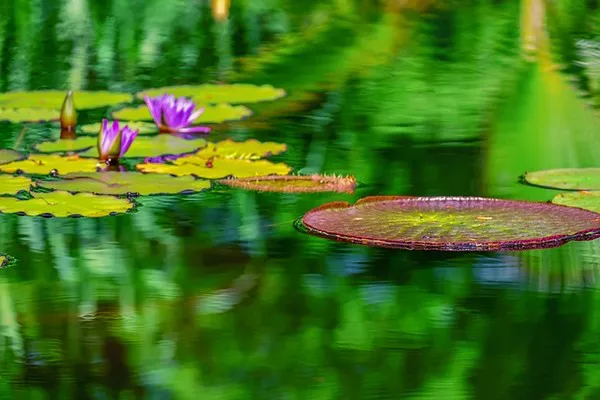Flowers have held profound symbolic meanings in various cultures throughout history, offering a language of their own through which we can express emotions, convey messages, and share deeper insights about life. Among the vast array of flowers, the lily stands out as a powerful symbol of growth. This article explores the rich history and symbolism of the lily as a representation of growth in various aspects of human life, from personal development to cultural significance.
The Lily: A Symbol of Renewal
The lily, with its elegant and delicate appearance, has long been associated with the idea of renewal and growth. Its purity and beauty have made it a popular choice for various ceremonies and events celebrating new beginnings, such as weddings and baptisms. In Christianity, the lily is often seen as a symbol of the Annunciation, when the angel Gabriel announced to the Virgin Mary that she would give birth to Jesus, signifying the beginning of a new era.
The lily’s white petals, a common color for this flower, further emphasize its connection to growth and renewal. White symbolizes purity and innocence, attributes that are often associated with the fresh start that comes with growth and personal development. The lily’s presence at such important life events underscores its role as a symbol of growth.
Cultural Significance
The lily’s symbolism goes beyond religious and spiritual contexts. It has also played a prominent role in various cultures worldwide, representing growth in different forms. Let’s explore the cultural significance of the lily as a symbol of growth.
1. Ancient Egypt
In ancient Egypt, the lily was highly regarded and symbolized both fertility and rebirth. The flower was closely associated with the goddess Isis, who was considered the mother of all living things. The lily’s presence in Egyptian art and culture signified the cyclical nature of life, with growth and renewal as integral components of this cycle.
2. Ancient Greece and Rome
The lily’s symbolism extended to ancient Greece and Rome, where it was linked to the goddess Hera and Juno, respectively. These goddesses represented marriage, family, and the protection of women. The lily’s presence in weddings and celebrations was believed to bring blessings and growth to the newlyweds, their families, and their communities.
3. Asian Cultures
In various Asian cultures, the lily represents growth and transcendence. For example, in Chinese culture, the lily is a symbol of motherhood, as it is believed that the flower nourishes and supports life, signifying growth and development. In Japanese culture, the lily represents purity and renewal, often used in floral arrangements for funerals as a symbol of the deceased’s journey to the afterlife, marking a new beginning.
4. European Renaissance
During the European Renaissance, the lily became a symbol of enlightenment and growth in the arts and sciences. It was frequently depicted in Renaissance paintings, representing purity and the pursuit of knowledge, both of which were essential elements of growth during this period.
Personal Growth and Development
The symbolism of the lily also extends to personal growth and development. Its association with purity and renewal makes it an ideal symbol for individuals striving to better themselves and embrace new opportunities.
Personal Transformation
The lily’s representation of purity and renewal can serve as a powerful reminder of the potential for personal transformation. Just as the lily sheds its old petals and emerges with fresh, vibrant blooms, individuals can shed their past mistakes and limitations to grow and evolve into the best version of themselves.
New Beginnings
The lily’s role in weddings and other life events signifies new beginnings and the start of a promising future. The flower’s symbolism encourages us to embrace change, seize opportunities, and cultivate personal growth, just as couples embark on their new journey together when they exchange wedding vows.
Inner Peace
The lily’s connection to spirituality and purity can inspire inner peace and emotional growth. It encourages individuals to find balance and harmony within themselves, nurturing personal growth in the process.
Healing and Growth
The lily has been traditionally associated with healing and recovery in various cultures. Its presence in gardens, hospitals, and homes is believed to have therapeutic effects, which further emphasize its connection to growth and renewal.
Medicinal Uses
In some cultures, lilies have been used in traditional medicine for their alleged healing properties. While modern medicine does not typically rely on lilies for treatment, their historical use highlights the belief in the flower’s ability to aid in recovery and growth.
Symbolic Healing
The lily’s symbolic significance as a representation of healing and growth has led to its presence in various healing environments. Whether in hospital gardens or as part of memorial services, lilies offer comfort and a sense of renewal during difficult times.
Conclusion
The lily, with its rich history and multifaceted symbolism, stands as a potent representation of growth in various aspects of life. Whether as a symbol of renewal, cultural significance, personal development, or healing, the lily’s presence underscores the universal theme of growth and transformation that spans different times and cultures. Its elegant beauty and pure white petals continue to inspire individuals to embrace change, nurture their personal growth, and celebrate new beginnings. Just as the lily sheds its old petals to reveal fresh, vibrant blooms, we too can shed our past limitations and emerge as better versions of ourselves, constantly renewing our journey of growth.


